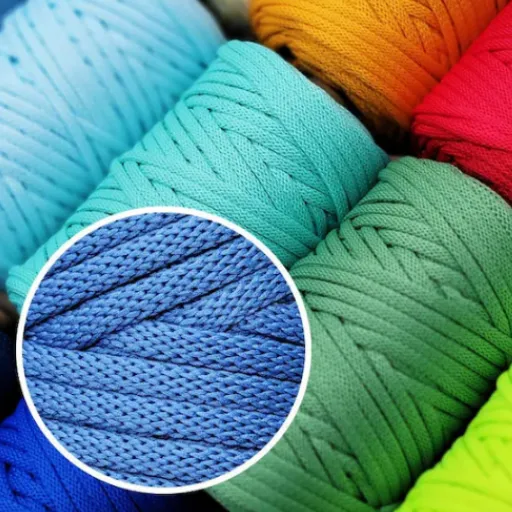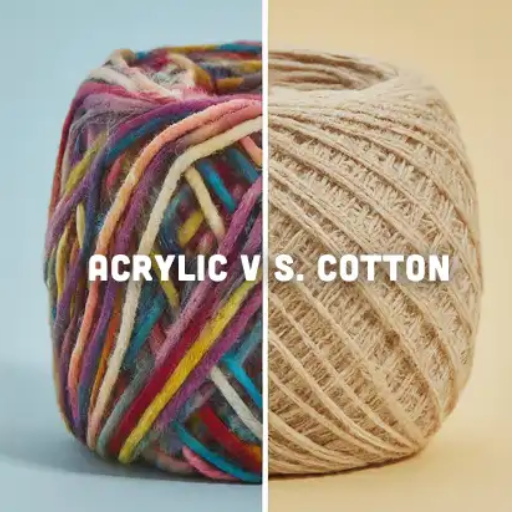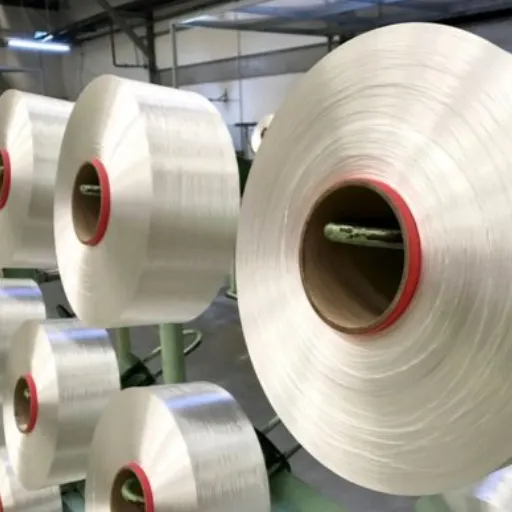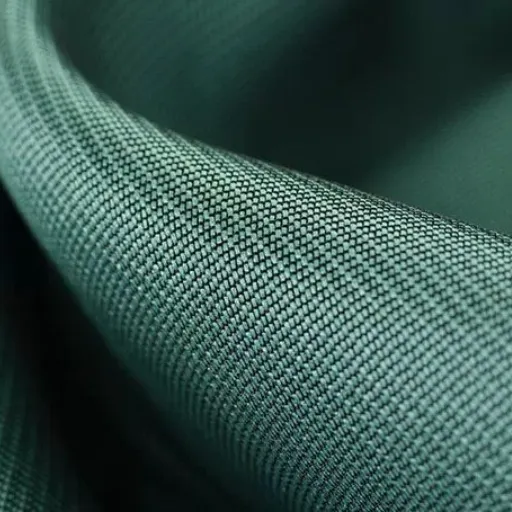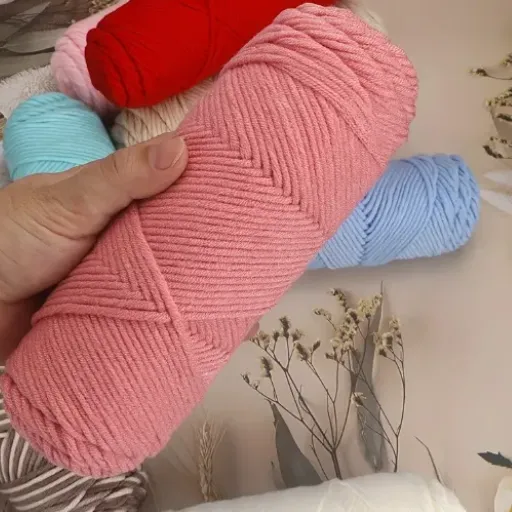The textile industry has been greatly influenced by the tensile strength, flexibility, and low price of polyester fiber since it was introduced as a new material. Not only in clothes that people wear every day but also in applications for industries, this man-made fiber has turned into an unavoidable part of the numerous items that people interact with daily. But, what are the actual reasons behind the widespread use of polyester fiber? What are the steps in the manufacturing process and what are the specific properties of polyester that give it a competitive edge over other fibers? The article is going to unfold the amazing saga of polyester fiber by revealing its main features, numerous uses, and the most advanced technologies in its production. Even if you are a fashion lover, product maker, or just a curious person wanting to know more about the modern materials, this guide will give you very useful information that concerns one of the most commonly used fibers worldwide.
Introduction to Polyester Fiber

What is Polyester Fiber?
Polyester fiber is a man-made fiber that is produced from crude oil and its byproducts. Its main ingredient is a polymer known as polyethylene terephthalate (PET), which is obtained by the chemical reaction of terephthalic acid and ethylene glycol. This technology yields strong and lightweight fibers that find their way into many different sectors.
One of the major characteristics of polyester fiber is its longevity combined with the fact that it is not easy to stretch, shrink, or wrinkle. Its properties also allow it to be a good performer in the outdoor garments and furniture industry, as it can easily withstand exposure to moisture and UV light. Apart from that, polyester can be blended with cotton to enhance its own comfort and performance while retaining its strength.
Polyester is also easy to maintain, which is another reason it is favored. Its resistance to stain, fast drying, and low maintenance requirements are the qualities that put it ahead of natural fibers such as wool or silk. The combination of these traits and low price has led to polyester being one of the most common and widely used fibers in the world for textiles, industrial applications, and even packaging materials.
Historical Perspective and Transformation
The 1940s saw the discovery of polyester by British chemists John Rex Whinfield and James Tennant Dickson who patented the first polyester fiber known as Terylene. This was part of the move to produce synthetic materials capable of imitating or even outrunning real ones. The innovation was in fact very timely since the textile industry then wanted a material that was not only durable and versatile but also easy to manufacture.
The production of polyester climbed the ladder quickly with industrial improvements of the post-World War II era particularly in the U. S. By the end of the 1950s, the new fabrics of polyester became the choice of many for their non-wrinkling, low price, and easy washing characteristics. Natural fibers could still be made but to a lesser extent since the weaving of these fabrics was already slow and the cost of producing them high. More gains from polyester were achieved by introducing polyester-blended fabrics which united the pros of synthetic and natural fibers.
Polyester has come a long way over the years in terms of technology and usage of manufacturing. The contemporary methods of production enable the making of polyester with diverse features like very good moisture-wicking for activewear and the recycling of plastics to get recycled polyester which caters to the environmental concerns that are coming up more and more. Polyesters still rule the textile market today giving a perfect mix of practicality, adaptability, and cost efficiency. Its role in fashion, industry, and sustainable practices makes it a significant factor in both the past and present scenarios.
Importance of Polyester in the Textile Industry
Polyester is very important in the textile industry as it is flexible and can be applied widely. Its durability, resistance to the formation of wrinkles, and lightweight nature have made it the most preferred material for various applications, including garments and home furnishings. The combination of these characteristics helps it to keep its leading position in the market where most times it is blended with natural fibers such as cotton in order to improve the performance and longevity of fabrics.
One more strong point of polyester is its cost-effective nature. It is produced at a lower cost than many of the natural fibers, thus making it suitable for large-scale production. Besides, the property of polyester being recyclable adds to the positives already as it is in line with the increasingly strict environmental concerns. Recycled polyester reduces the use of virgin raw materials, cuts down on waste, and helps the textile industry move towards a circular economy.
Polyester’s flexibility is not limited to apparel only. It finds its way into the production of almost all technical textiles for industries like automotive, construction, and health care, where durability, elasticity and ability to withstand harsh environmental conditions are repeatedly needed. This wide applicability reveals polyester’s importance to the extent of being an essential raw material for both functional and aesthetic textile requirements all around the world.
Distinct Properties of Polyester Fiber
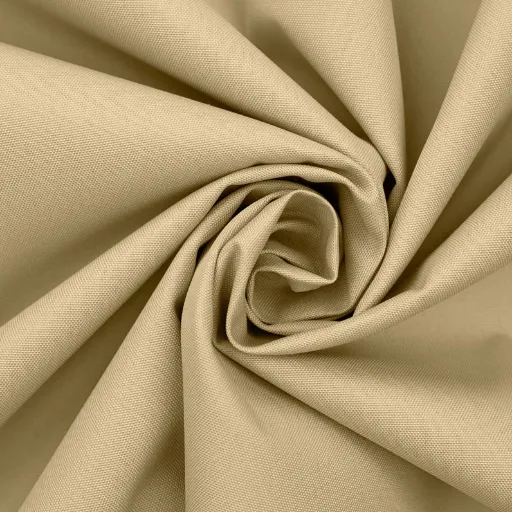
Durability and Strength
Polyester fiber is one of the strongest and most durable fibers that have been developed so far. Its strength and durability combined make it the fiber of choice for different applications. The fiber’s strong nature enables it to endure heavy-duty use and thus last for a long time without losing its quality. Besides, polyester has excellent resistance to both stretching and shrinkage; hence, it always ensures that the products made from it stay on their original shape for a long time.
Another very important quality of polyester fiber is its ability to withstand different environmental conditions. It is one of the most durable materials under such conditions as moisture and UV radiation exposure, as well as the presence of chemical agents. For this reason, polyester is often associated with outdoor and industrial applications where materials have to be tough enough to withstand harsh environments all the time. The fiber’s capability of resisting decay is one of its attributes that have helped it acquire the status of long-lasting and reliable material.
Moreover, polyester’s blending capability with other natural or synthetic fibers is one of the major factors that contribute to its strength. The combination of polyester and any other fiber can lead to the creation of hybrid textiles that bring together the advantages of both durability and functionality. The fiber’s versatility assures that it caters to the diverse needs of the industries of today. Thus, it is a big factor to consider in various sectors such as apparel, advanced technology, and more.
Moisture-Wicking and Quick-Drying Properties
Polyester has been gaining a lot of recognition for its moisture-wicking along with quick-drying properties and thus it is a very accepted fiber in different applications. Moisture-wicking and quick-drying are the two main advantages of polyester which comes from its water repellent property. The fabric being water-repellent allows the water or in this case, the sweat to move rapidly to the fabric surface, where it eventually evaporates. So, such a process of sweat expulsion through evaporation is very quick hence the person who is doing the physical activity or is in a humid environment feels dry and comfortable.
Collections of polyester fibers enabling these features are also a great contribution besides the fabric’s hydrophobic nature that makes it very liquid-resistant, which is unlike the natural fibers that are more susceptible to porosity. Besides, modern manufacturing techniques give the fibers better moisture management by changing the shape of the fiber or applying special finishes, which, however, would not compromise the very lightweight nature of the fabric because wicking capabilities have been enhanced further.
Polyester is a great option for the sectors where moisture control is a matter of concern like activewear, camping gear, and home textiles. Moreover, polyester not only keeps the moisture away from your body but also evaporates it easily so you stay comfortable and practical all the time, anywhere. Its performance in this aspect also shows the extent of its importance in different sectors.
Resistance to Wrinkles and Shrinkage
Polyester is very durable and resistant to wrinkles and shrinking which together with its quality make it a go-to for many industries. Polyester synthetic fibers are made to hold their shape even when worn and washed regularly. This property allows polyester clothes and fabrics to be smooth and good-looking with just a little care.
The reduction in ironing is another plus of wrinkle-resistant properties which in turn saves time and effort for users. The ability of polyester to be without creases even in the most demanding applications is a great benefit which is with the professional looks, the home décor and the travel-ready clothing, where a clean and bright look is a must.
Besides, polyester’s durability to shrinkage provides consistency in fitting and hence the fabric lasts for a very long time. Unlike the case for natural fibers which shrink when they come in contact with either water or heat, polyester stays the same with regard to size and shape. This is a great combination that makes such a fabric a wise choice for long-term use and at the same time, it is economically viable and low maintenance.
Types of Polyester and Their Characteristics

Differentiating Types of Polyester Fibers
Polyester fibers are broadly classified into several categories according to the method of production, structure, and application. The most important kinds of polyester fibers along with their respective characteristics, applications, and innovations are reported as follows:
PET (Polyethylene Terephthalate) Polyester Fiber
The most popular and widely sourced polyester type is PET. It is recognized by the industry for its properties—maximum durability, recyclability, and versatility. The usage of PET fibers spreads over clothing, home textiles, industrial applications, and packaging. Approximately more than 70% of the total polyester output taking place worldwide is PET-based as per the recent statistics with the sustainable trend of recycled PET (rPET) materials gaining ground to minimize wastage.
PCDT (Poly-1,4-Cyclohexylene-Dimethylene Terephthalate) Polyester Fiber
The main difference between PCDT and PET fibers lies in the molecular structure, which results in better elasticity and durability. The places where PCDT fibers can be used rely on the physical qualities of these fibers; hence, these are heavy-duty fabrics, furniture upholstery, and some industrial usages. Although not as widely used as PET, the innovations in PCDT production are making it increasingly environmentally friendly.
Microfiber Polyester
Microfiber polyester is an ultra-fine fiber that is thinner than silk fibers. These fibers have a very soft feel, are lightweight, and have a great capacity to repel water and absorb oil. Microfiber polyester is the leading material in cleaning products, sportswear, and high-performance garments. According to recent market analysis, the demand for microfiber polyester has been on a steady rise due to nanotechnology making the functional properties of the fiber better.
Bi-Component Polyester Fiber
Copying two polymers having different melting points to create this type of polyester leads to the superior bonding and thermal properties of the material. The use of bi-component fibers is mainly in the nonwoven applications such as filtration, insulation and geotextiles. The production of bi-component fibers is on the rise as the demand for eco-friendly, high-performance nonwoven materials is driving it.
Plant-Based and Bio-Polyester
Plant-based polyesters which are made of renewable biomass feedstocks instead of petroleum have gained popularity in the last few years. Bio-polyester comes with similar properties to traditional polyester although its environmental impact is very low. The bio-polystyrene market is said to witness consistent growth in the next decade because of the increasing global demand for sustainable textiles.
Learning about various polyester fibers and their respective applications, and keeping track of the market dynamics and innovations will enable manufacturers and consumers to make choices that are not only sustainable but also more intentional in the textile industry.
Applications and Uses of Polyester Fiber
Polyester Fiber is one of the most versatile materials used because of its durability, resilience, and low cost in many industries. Its applications are in textiles, industrial uses, and home furnishings, among others.
Textile Industry
Polyester is the most popular synthetic fiber and it dominates the textile industry. It is widely used in clothing such as sportswear, casual wear, outerwear, and fashionable items because of its lightness, high-strength features, and non-shrinking and stretching properties. A recent market analysis report states that around 55% of global production of textiles is from polyester fibers. Thus, polyester plays a very important role in daily wear.
Industrial Applications
The strength and versatility of polyester fibers make them ideal for industrial applications. They are present in ropes, conveyor belts, and tire reinforcements. For instance, their use in geotextiles for soil stabilization and road construction has been shown to reduce maintenance costs while increasing the lifespan of the application. In packaging, polyester dominates the market as it is the main material in the production of Polyethylene Terephthalate (PET) bottles, which are not only lightweight but also recyclable thus making them perfect for daily use products like hinking and consumables.
Home Furnishings
Polyester fiber has gained a major role in home furnishings and interior materials like carpets, curtains, upholstery, and bedding. Wear-and-tear resistance and retention of bright colors are some reasons why consumers and manufacturers are fond of it. The latest technical developments, like recycled polyester from PET bottles, are contributing to the sustainability trend that is getting stronger in this area.
Innovations in Technical Applications
Technological progress has increased polyester’s application to high-tech areas. Smart fabrics use polyester for textiles that can monitor health metrics. Moreover, recycled polyester (rPET) is becoming more popular in sectors that are trying to lower their carbon footprint.
Polyester fibers can adapt and possess the right properties that are in line with sustainability efforts—hence their continuous survival in different sectors, even in the most innovative ones. The fiber’s importance in meeting modern demands is shown by the market’s growth and ongoing material improvements.
Mechanical Properties of Various Polyester Fabrics
Polyester fabrics have a wide array of mechanical properties that, thanks to their versatility and durability, can be used in numerous applications. A major trait of these fabrics is their very high tensile strength, which makes them capable of enduring considerable pulling forces without breaking. Such strength opens up the usage of polyester fabrics in heavy-duty applications such as industrial textiles and outdoor gear, among others.
Moreover, the exceptional elasticity and resilience of the fabrics can be considered another significant property. The polyester fibers are very good in recovering from deformation, which means they do not change their shape even after being stretched or compressed. They thus can be used in areas where resistance to wrinkling and longevity are required like garments and upholstery.
In addition to the aforementioned qualities, polyester fabrics also have resistance to abrasion thus providing a long life performance against wear and tear. Along with their low moisture absorption, they are less likely to suffer from damage due to prolonged wet conditions or humidity, as well. These mechanical features make it impossible for polyester not to be a common material used in different industries since it meets the combination of performance and sustainability requirements.
Comparison with Other Synthetic Fibers
Due to its usage and adaptability, polyester is frequently put side by side with other synthetic fibers like nylon, acrylic, and spandex. While polyester has many characteristics in common with these fibers, it is still the best choice in terms of durability, performance, and cost-effectiveness. Apart from nylon, polyester is usually more resistant to both stretching and shrinking hence it is the most suitable for applications where fabric stability is very important. Moreover, polyester is cheaper to produce, which ultimately leads to its high demand in the textile industry.
On the other hand, an acrylic if closely considering would be less resistant than polyester to water and fading thus making it less preferred for outdoor and long-term applications. Still though it is soft and lightweight, acrylic is the kind of fabric that will lose its original look and will need frequent replacements which is the opposite of the case with polyester. Polyester is also the only fiber that compares to Lycra in that they both are very elastic and stretchy with Lycra, however, it has already lost the resistance and strength of polyester so its applications are limited to areas where performance is not such a big deal.
Polyester’s superior strength, moisture resistance, and cost-effectiveness over other synthetic fibers are its outstanding qualities. Its wide-ranging applicability from clothing to building materials is a sign of its reliability and effectiveness. By providing a practical compromise between performance and price, polyester is still one of the most used and versatile synthetic fibers globally.
Manufacturing Process of Polyester Fiber

Production Techniques Overview of Polyester
The dominant method for the production of polyester fiber is polymerization. The process involves the accurate merging of terephthalic acid (or its derivative dimethyl terephthalate) with ethylene glycol under strict heat and pressure conditions. This chemical change yields long chains of molecules known as polymers. Polyethylene terephthalate, or PET, is the major component of most polyester fibers and the product of this reaction.
After the creation of the PET polymer, it is passed through a melting and spinning process as mentioned above, which is then cooled and the fiber structure of the yarn is formed. The filaments can be processed further depending on the traits desired, for instance, they can be stretched to align the molecules and thus increase the fiber’s strength and durability.
Finally, the filaments are either cut into smaller pieces to make staple fibers or remain as continuous filaments for use in other applications. The fibers are then treated, dyed, and finished according to their end use, be it textiles, industrial materials, or other products. The ability and accuracy of this method are factors that have made polyester a top fiber globally.
Step-by-Step Guide to Manufacturing Polyester Fiber
Polymerization
The whole procedure is initiated by polymerization where purified terephthalic acid (PTA) or dimethyl terephthalate (DMT) undergoes a reaction with ethylene glycol. By means of controlled temperature and pressure, these raw materials are chemically transformed into polyester polymers through a process called condensation. In this phase, water or methanol is produced as a byproduct.
Spinning
After the polymer is created, it is then melted and forced through spinnerets, which are devices consisting of tiny apertures. This results in the production of polyester filaments that are also known as fibers. The size and characteristics of the filaments can be varied depending on the spinneret design or extrusion settings.
Stretching and Cooling
The filaments that were extruded are then stretched to enhance their strength and elasticity due to the alignment of the molecular structure. The fibers are then cooled very quickly to set their structure after stretching. The cooling method usually entails air or water quenching which ensures that the fibers get their desired physical properties.
Crimping and Cutting (if necessary)
If the application needs shorter or textured fibers, the filaments are crimped first to give them elasticity and flexibility. After that, they can either be cut into staple fibers or remain as continuous filament yarn according to the end-use of the polyester product.
Finishing
In the last step, the fibers are subjected to finishing processes like dyeing, coating, or texturing, etc. which are done according to the specific requirements for aesthetics and functionality. The polyester fibers obtained are then ready to be either woven or knitted into fabrics or used in other industrial applications.
This entire process guarantees that polyester fibers are multifunctional and that their commercial application spans a wide range, from textiles to technical applications.
Technological Innovations in Polyester Production
The production of polyester has received a significant impact from recent technological innovations that have improved its efficiency, sustainability, and applicability in various areas. One major change is the use of bio-based polyester made from renewable resources like plant-based sugars instead of petroleum, which is the traditional way of making polyester. This means less pollution and less consumption of fossil fuel resources. Researchers are always looking for ways to improve these processes so that they are not only sustainable but also cost-effective.
In addition to this, another remarkable development is the use of recycling technologies in polyester production itself. One of the recycling techniques, known as chemical recycling, converts used polyester into the very basic molecular components, which in turn makes it possible to produce high-quality fibers that are equal in all respects to those made from virgin materials. Such actions are in line with the concept of a circular economy, and they also cut down waste and lessen the industry’s dependence on non-renewable resources.
Moreover, nanotechnology has played a big part in transforming polyester’s basic features and making it usable in more ways. Polyester fibers that are nanosstructured have now had their functionalities improved and thus, they can show longevity, be waterproof, and even possess certain bacteria-resistant properties. In fact, these breakthroughs are opening up newer horizons of polyester applications especially in the areas of healthcare and industrial textiles, which are already considered to be very soft and overstretched markets. The journey of these technological achievements points to the fact that the industry is committed to sustainability while satisfying the needs of diverse markets.
Environmental Impact of Polyester Fiber
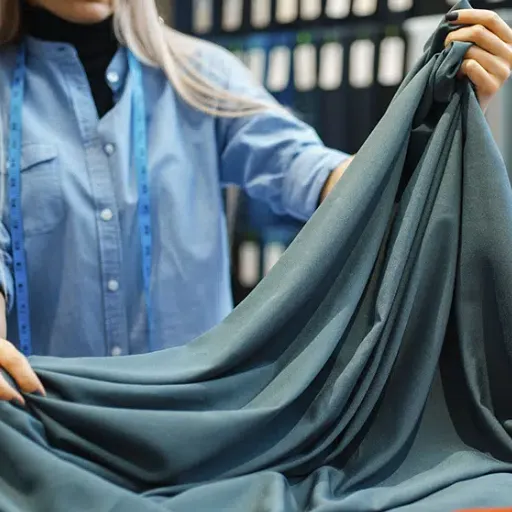
Polyester Production and Its Environmental Challenges
The production of polyester is a source of great concern for the environment mainly due to the fact that it is made from non-renewable resources and through energy-consuming processes. Polyester is made from petroleum, which is a non-renewable resource, and during the production of polyester, greenhouse gases like carbon dioxide are released, thus making a contribution to global warming. The energy usage in the manufacturing process adds to its environmental impact and is hence an issue of sustainability.
Another negative aspect is the durability of polyester and its damaging effect on nature. Its long life could be seen as a pro for consumers but at the same time it means that polyester will not degrade fast enough. The outcome is that the discarded polyester get to take up space in the landfills for several years, thus creating a lot of waste that is difficult to deal with. In addition, when a polyester garment is washed, it releases microplastics—small fibers—and the water system and oceans are usually the final destinations of these microplastics, and they can kill aquatic organisms and even get into the human food chain.
Overcoming these challenges will call for not only inventiveness but also a shift in people’s behavior. The industry is considering the use of recycled polyester made from post-consumer waste as a greener alternative to virgin polyester. The efforts made by consumers in this regard would be to support recycling programs and support the sustainability options whenever feasible. The introduction of stricter regulations, better waste management systems and the development of biodegradable polyester technologies will all contribute to reducing the environmental degradation caused by polyester production and use.
Recycling Polyester: Current Practices and Innovations
Recycling polyester has become an essential practice to lessen the environmental impact of synthetic textiles. One main recycling technique currently used in the industry is mechanical recycling, which involves collecting post-consumer waste, like plastic bottles and old polyester clothes, cleaning, shredding, and melting it to produce recycled polyester fibers. This operation not only takes waste away from the landfills but also cuts down the usage of virgin raw materials. Nevertheless, mechanical recycling comes with certain disadvantages, such as the fiber quality being downgraded after multiple cycles, which could result in the material being less durable.
New approaches are being developed for chemical recycling to solve these issues. Chemical recycling dismantles polyester completely into its basic elements, which makes it possible to generate fibers that are of equal quality and have the same characteristics as the virgin polyester. The process is capable of carrying out an infinite number of recycling cycles and can accept mixed or contaminated textiles that mechanical recycling cannot deal with. It is still not popular because of the cost factor and the energy-intensive nature of the process.
Modernizing recycling practices also includes the investment in advanced technologies to increase chemical recycling’s efficiency and lower its cost. Raising public awareness and inviting the public to participate in recycling programs are important measures to guarantee that there are enough materials collected for recycling. Furthermore, governments and organizations are forming closed-loop systems, where polyester products will be built with recycling in mind, thus lessening waste and making a more sustainable textile industry.
Future of Sustainable Polyester Fibers
The sustainable polyester fibers’ future is in applying modern technologies and bettering the manufacturing process so that the environmental effects are reduced. Innovations like bio-based and biodegradable polyester, produced from renewable resources instead of fossil fuels, are gaining popularity because they offer a less harmful option to Mother Nature. The groups are also embracing the chemical recycling processes that permit the used polyester fibers to be disassembled into their raw elements and afterward reprocessed with only a little quality loss.
Industry and government collaboration will be very important in the large-scale production and successful marketing of sustainable polyester. The stakeholders can form partnerships, share knowledge, and create clear policies to work together, set the standards, and encourage the adoption of greener alternatives through They can also turn to Governments. Thanks to such policies, government support for the research, development, and subsidies for sustainable technologies will be granted while strict waste management regulations are enforced.
Meanwhile, the eco-conscious consumer’s awareness and demand will be the main factors to shape the sustainable polyester market’s development. Spreading the word about the environmental merits of recycled and alternative fibers might lead to more eco-friendly purchasing behaviours. The combination of innovations, supportive policies, and growing demand can thus drive the textile industry towards a circular and environmentally responsible future. Sustainable polyester fibers are an important milestone in the quest of the fashion and textile industries to overcome environmental hurdles, thus making it possible to have a good balance between the utility and eco-friendliness.
Frequently Asked Questions (FAQ)
Q: What is polyester fiber?
A: Polyester fiber is a synthetic fabric that has been manufactured from polymers that are mainly made from petroleum. It is a highly recognized material in the clothing industry along with upholstery and industrial products because of its durability, resilience, and also its versatility.
Q: What are the various kinds of polyester?
A: PET (polyethylene terephthalate), PCDT (poly-1,4-cyclohexylene dimethylene terephthalate), and recycled polyester are some of the common types of polyester that people use. Each type possesses its own characteristics and applications that range from clothing and textiles to industrial usages.
Q: What is the process of polyester manufacturing?
A: The process of polyester manufacturing includes polymerization whereby the components consist of ethylene glycol and terephthalic acid, which go through the chemical reactions that make the melted polyester. After that, the melted polyester is spun into fibers, which may be further processed into different products.
Q: What properties make polyester a perfect material?
A: Polyester is characterized by its uniqueness and high strength, being able to withstand both wrinkle and stretching, as well as drying very quickly. Because of these properties, polyester can be used in many things ranging from shirts and pants to safety belts and upholstery.
Q: How does polyester match up to cotton as a natural fiber?
A: While polyester is not a natural fiber like cotton, it is a synthetic one that has the same qualities as cotton durability and environmental resistance. On the other hand, cotton offers the moisture vapor balance and comfort so that use of polyester has been done mainly in case of strength and maintainability.
Q: In what sectors does polyester find use?
A: Polyester has a very wide range of uses; it is like the king of fabrics and is used from clothes to upholstery and industrial products all around. Its chemical structure is such that it allows for the making of polyester textiles which are very resistant to shrinking as well as fading hence they are the favorite choice for fashion as well as home décor.
Q: What is the composition of polyester fibers?
A: The composition of polyester fibers is built up of long chains of ester functional groups which are obtained through the reaction of diols and dicarboxylic acids. This particular setup of the fiber plays a big role in not only the fiber’s strength and durability but also in its resistance to different environmental conditions.
Q: Is it possible to mix polyester with other fabrics?
A: Certainly, polyester can be mixed with other fabrics like polyamide and nylon to get some particular properties enhanced. The resulting blend can be more comfortable, more durable and more effective in moisture-wicking, hence it can be used for specialized applications.
Q: What are the ecological concerns regarding the manufacture of polyester?
A: Although polyester ranks high for its desirable properties among synthetic fabrics, the production of polyester still contributes to the climate change issue. Nonetheless, the breakthrough in recycling technology will eventually lead to a situation where only recycled polyester made out of plastic waste will be used thus minimizing the ecological footprint.
Q: Why is there an increase in the demand for polyester?
A: The escalating trend toward the demand for polyester is primarily due to versatility, durability, and cost-effectiveness. Always the case where industries are looking for materials that are both high-performance and low-cost, polyester reroutes itself to be the only option because of its excellent properties and vast applications from fashion to industrial sectors.
References
- Fiber Guide: Polyester – A detailed guide on polyester as a synthetic fiber, its raw materials, and applications.
- What is Polyester Fabric: Properties, How it’s Made and More – Explains the properties of polyester fiber and the process of its creation.
- Manufacturing Process of Polyester (10 Steps) – A step-by-step breakdown of how polyester is made, from crude oil extraction to fiber production.
- How Polyester is Made – Material, Manufacture, Making – Covers the different forms of polyester fiber and its manufacturing process.
- The Process of Creating Polyester Fiber – Describes the stages of polyester fiber creation, including polymerization, extrusion, and crimping.









